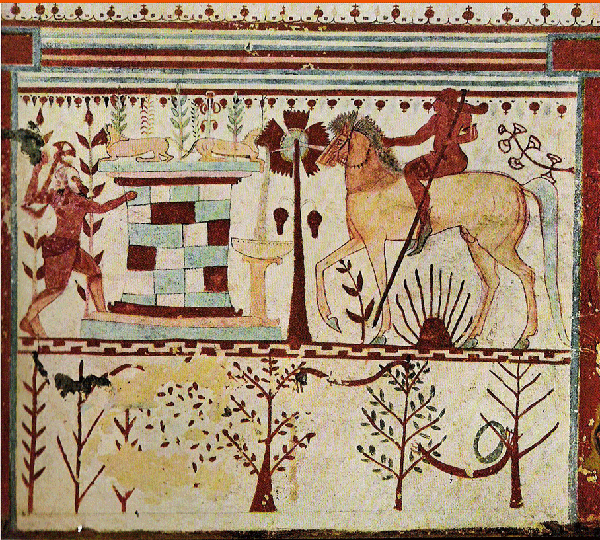In my travels I have photographed a number of sculptures of Hadrian's companion, Antinous. Over 100 sculptures of the tragic young man have survived to modern times and classicist Caroline Vout has noted more images have been identified of Antinous than of any other figure in classical antiquity with the exceptions of Augustus and Hadrian himself. This is probably attributable to Hadrian's deification of the young man after his death and the subsequent cult of Antinous that became widespread throughout much of the Roman Empire.
Although officially, Hadrian announced that Antinous fell into the Nile and drowned, there have been a number of hypotheses about the young man's death. Hadrian's entourage at the time is thought to have included Lucius Ceionius Commodus, a young aristocrat whom Antinous might have deemed a rival to Hadrian's affections. In fact, soon after Antinous died, gossip quickly spread that Antinous had been intentionally killed. Despite the official circumstances of the young man's death (at the time of his death, Antinous is thought to have been only 18-20 years old), Hadrian does not describe the death as being an accident, however, and some scholars point to this as suspicious.
If Antinous' death was not accidental, some scholars propose that he may have been murdered by a member of a court conspiracy. The entourage assembled at Heliopolis included powerful military figures including the Prefect in Egypt as well as army and naval commanders. But Royston Lambert, author of "Beloved and God: The Story of Hadrian and Antinous," points out that, besides lacking any supporting historical evidence, Antinous appeared to exert little influence over Hadrian's political activities, thus an assassination would seem to serve little purpose.
Other scholars have suggested Antinous died during a voluntary castration as part of an attempt to retain his youth and thus his sexual appeal to Hadrian. However, Lambert observes this is improbable because Hadrian deemed both castration and circumcision to be abominations and as Antinous was aged between 18 and 20 at the time of death, any such operation would have been ineffective anyway.
Another possibility is that Antinous represented a voluntary human sacrifice. The earliest surviving evidence for this comes from the writings of Dio Cassius, 80 years after the event, although it was subsequently repeated in many later sources. In the 2nd century Roman Empire, a belief that the death of one could rejuvenate the health of another was widespread, and Hadrian had been ill for many years. In this scenario, Antinous could have sacrificed himself in the belief that Hadrian would have recovered. If this last situation were true, Hadrian might not have revealed the cause of Antinous's death because he did not wish to appear either physically or politically weak. Conversely, opposing this possibility is the fact that Hadrian disliked human sacrifice and had strengthened laws against it in the Empire. Hadrian also appeared to be genuinely devastated by the youth's death and was probably directly responsible for his immediate deification by the local Egyptian priests. Although deification was not uncommon, in the Roman world formal divinization was, until that time, reserved for the Emperor and members of the imperial family. Hadrian also did so without permission of the Senate, making the establishment of Antinous' cult highly unusual.
Archaeological evidence makes it clear that the cult ended up being genuinely popular among the different societal classes in the Empire. Part of the appeal was that Antinous had once been human himself, and thus was more relatable than many other deities. It is also possible, however, that his cult borrowed power from parallels between Antinous and beautiful young male immortals in the Greco-Roman pantheon like Apollo, Dionysus, and Silvanus as well as mortal youths beloved by gods in classical mythology like Ganymede, Hylas, Hyacinth, and Narcissus. These characteristics were common also to the cults of Attis, Endymion, and Adonis. Like the latter and the god of the newly established Christian religion, Antinous was also treated as a dying-and-rising god, not only in Egypt, but in Rome and Greece.
By the way, Lucius Ceionius Commodus was eventually named Hadrian's heir and became Lucius Aelius Caesar, who would father the Emperor Lucius Verus. Although Lucius had no military experience, he had served as a senator, and had powerful political connections. Perhaps Hadrian's affection for Antinous just proved to be too much of an obstacle to the political proponents of Lucius Ceionius Commodus even though Antinous himself expressed no political ambitions. After all, Hadrian was seriously ill during this period and succession may have appeared imminent.
Image: A portrait bust of Antinous thought to have been sculpted around the time of his death that I photographed at the Palazzo Vecchio in Florence in 2005.
If you enjoyed this post, never miss out on future posts by following me by email!


















































